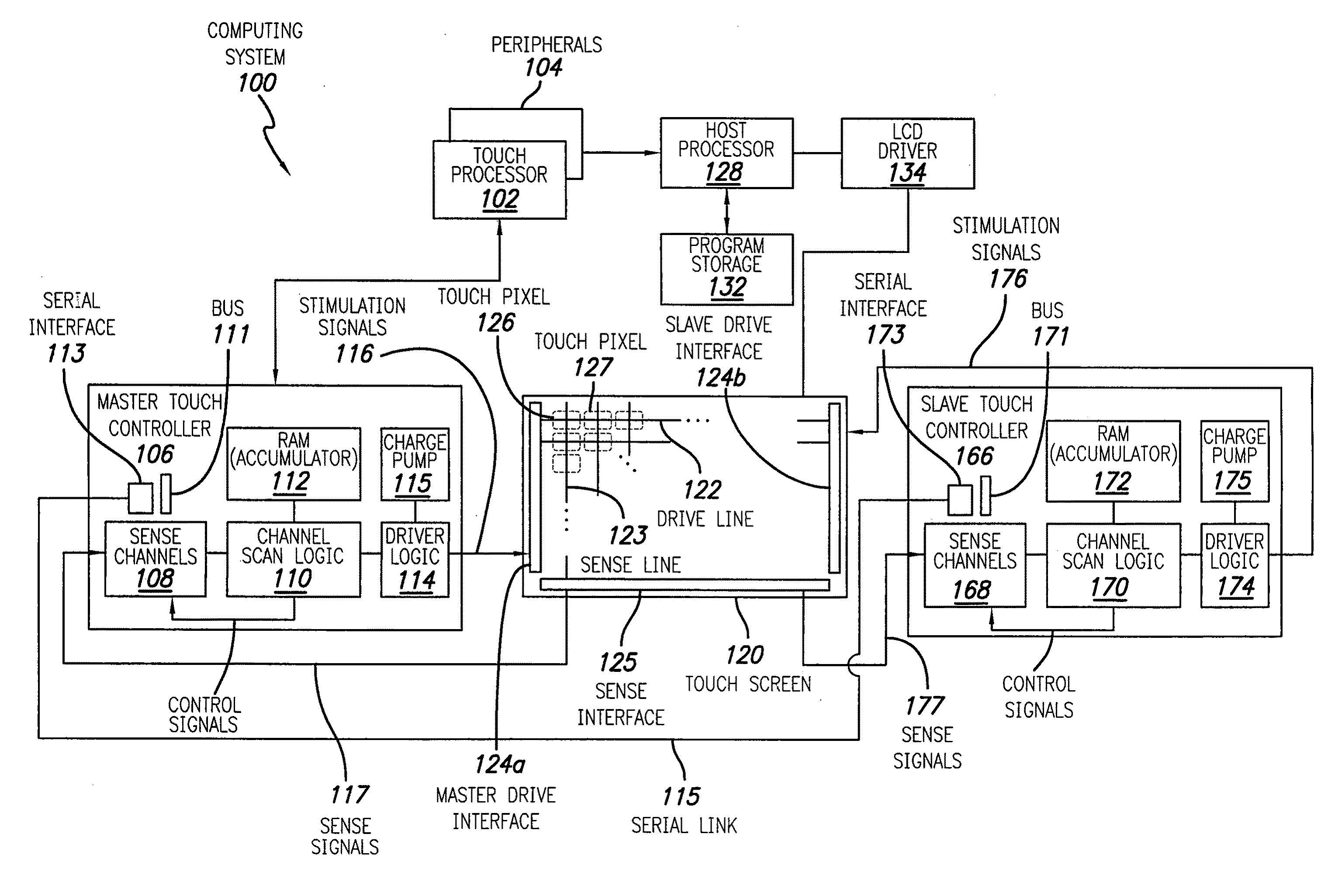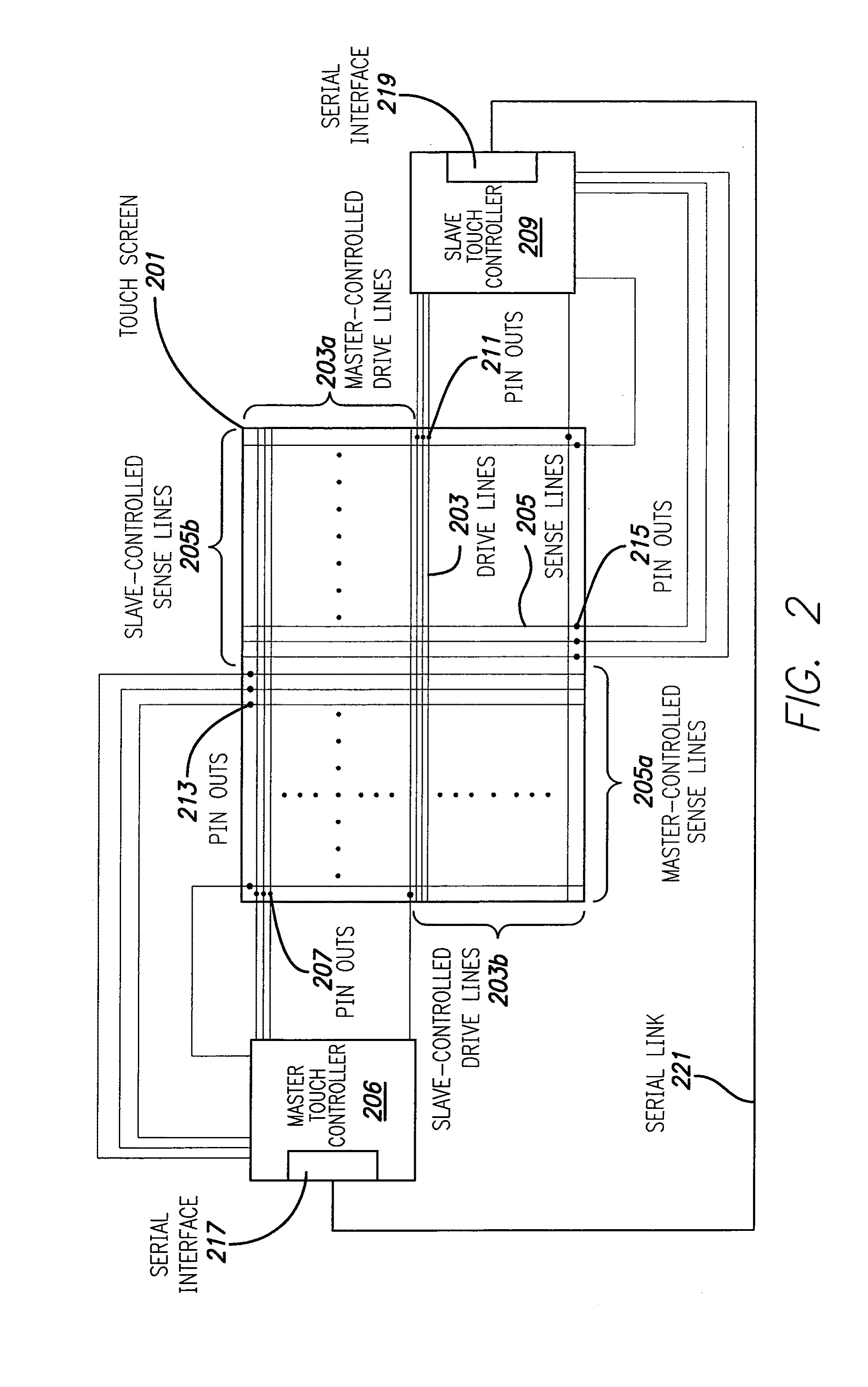Master/slave control of touch sensing
a touch sensor and master/slave technology, applied in the field of touch detection, can solve the problems that the single controller asic cannot support the touch sensor panel adequately
- Summary
- Abstract
- Description
- Claims
- Application Information
AI Technical Summary
Benefits of technology
Problems solved by technology
Method used
Image
Examples
Embodiment Construction
[0020]In the following description of embodiments, reference is made to the accompanying drawings which form a part hereof, and in which it is shown by way of illustration specific embodiments of the disclosure that can be practiced. It is to be understood that other embodiments can be used and structural changes can be made without departing from the scope of the disclosed embodiments.
[0021]This relates generally to touch detection using a master / slave configuration, and more particularly, to the synchronization and coordinated operation of a master touch controller and one or more slave touch controllers. The coordinated operation can include phase-aligning various clock signals of the master and one or more slave controllers, such that coordinated operation can be achieved. Various operations can be performed based on the phase aligned clock signals, such as driving the touch sensing surface with in-phase drive signals from the master and slave touch controllers, demodulating sen...
PUM
 Login to View More
Login to View More Abstract
Description
Claims
Application Information
 Login to View More
Login to View More - R&D
- Intellectual Property
- Life Sciences
- Materials
- Tech Scout
- Unparalleled Data Quality
- Higher Quality Content
- 60% Fewer Hallucinations
Browse by: Latest US Patents, China's latest patents, Technical Efficacy Thesaurus, Application Domain, Technology Topic, Popular Technical Reports.
© 2025 PatSnap. All rights reserved.Legal|Privacy policy|Modern Slavery Act Transparency Statement|Sitemap|About US| Contact US: help@patsnap.com



